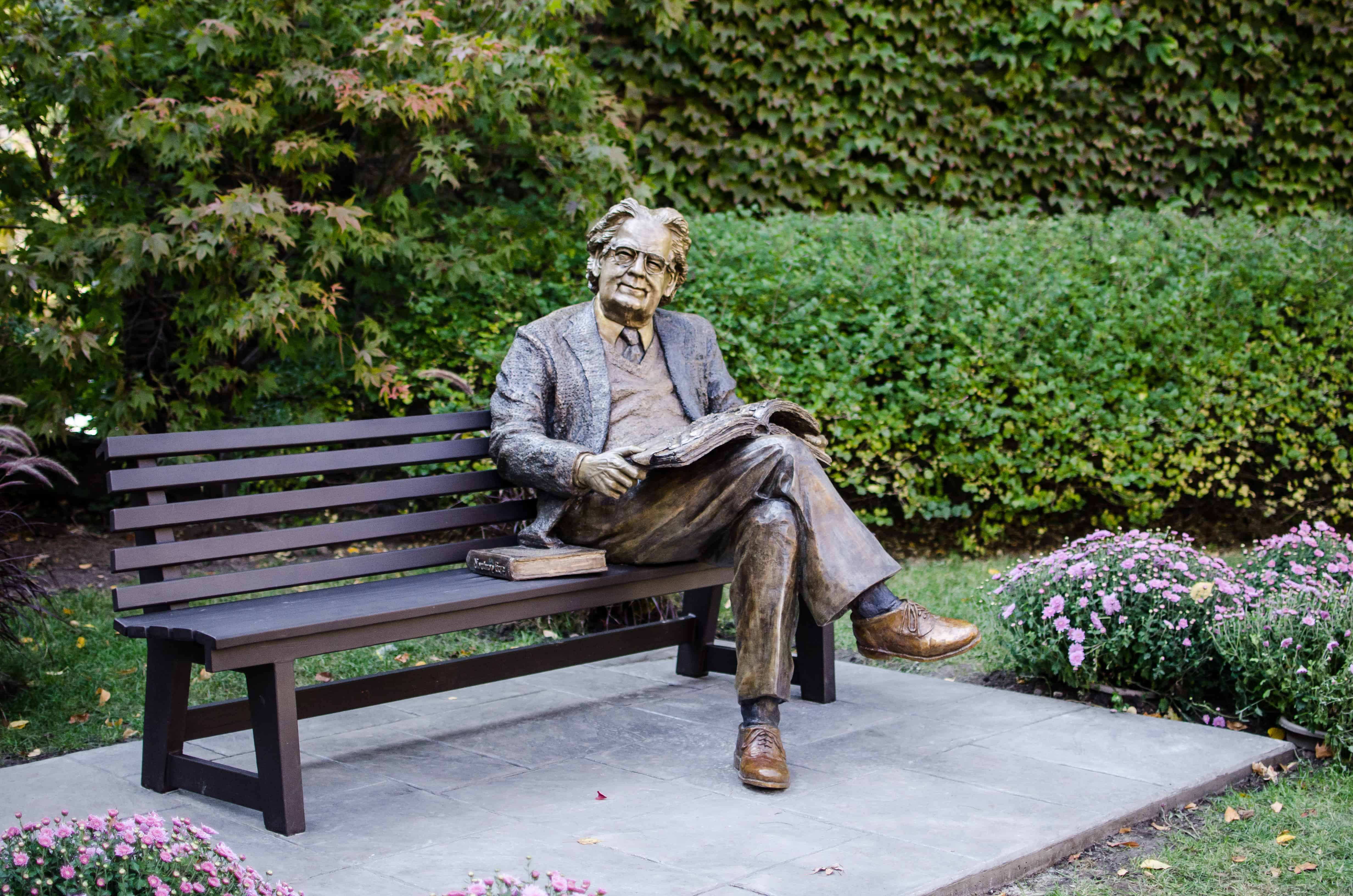The centennial anniversary of Northrop Frye’s birth began last week at Victoria College with the unveiling of a statue in Frye’s honour.
Frye’s complete collected works as published by the University of Toronto Press were also presented for the first time. The events marked the beginning of a three-day conference hosted by the Department of English honouring Frye and his accomplished academic career.
The collection of Frye’s works was presented by Drs. Alvin Lee, Jean O’Grady, and Ron Schoeffel. “The collection is in 30 volumes, and was completed in 16 years,” said Schoeffel. All three editors shared stories of years of labour on the volumes, and their personal connections to Frye. “I think I am the only person that is able to say my wife was actually stuck in an elevator with Northrop Frye,” Schoeffel joked.
The ceremony began Thursday evening with a presentation in the Isabel Bader Theatre led by Paul Gooch, president of Victoria College. Guests were serenaded by two Bach pieces played on the piano by William Aide, a professor emeritus from the Faculty of Music. Frye had been known to love the work of Bach, said Aide, and the pieces were chosen accordingly.
An hour later, the audience exited the theatre to witness the unveiling of the statue of Frye for the first time. Angela Esterhammer, a former student of Frye and the new principal of Victoria College, removed the white cover along with Dr. Alvin Lee, revealing the life-size statue of Frye.
Darren Byers and Fred Harrison, the two artists who created the sculpture in Elliot, Maine, were on hand for the unveiling. Standing, the statue would be around seven feet tall, and it weighs approximately 300 pounds.
The statue is located to the west of Northrop Frye Hall on the Victoria College campus, and its gaze faces eastward, towards the E.J. Pratt Library, founded during Frye’s tenure as principal of Vic. The sculpture depicts Frye seated on a bench, his legs crossed, with a book in hand and more surrounding him.
Byers and Harrison, who previously designed a statue of Frye for the city of Moncton, NB, altered the statue in order to best represent Frye’s time at U of T. The images in the book that Frye holds include an angel, the Leviathan, the divine creator, piano keys, his first wife Helen, a typewriter, and a train, which the artists say were selected to represent his life, his imagination, his passions and his accomplishments.
The stack of books that are placed beside him are representative of Frye’s work as well. One book includes a stained-glass recreation of a window Frye was fond of from St. Mary’s Church in Gairford, Gloucestershire. Another book is decorated with the same design that enclosed the first edition of Milton’s Paradise Lost. The third book shows a section of William Blake’s face looking upwards. Included in the stack of books is Frye’s class planner and his personal journal, placed under his left elbow.
Byers said that Frye was at the apex of his career during his time at Victoria College, at his “most recognized and most recognizable.” Byers and Harrison say they sculpted Frye in a balanced, relaxed pose to portray a sense of warmth and contentment that Frye had with himself and his surroundings at this point in his life.
“I hope students see him as a wise scholar, and a very humane person, because that’s what he was,” said Lee. “He was a little shy, but he was prodigious and a world influence. He had a very warm smile. I hope a lot of students and others have their pictures taken sitting beside him.”
As the unveiling concluded indoors at a reception, guests looked forward to the presentation of dozens of scholarly papers, various lectures and a pub night in the upcoming days of the conference. Guests from China, Budapest and the United States were also in attendance.
“We’ve had a lot of great scholars,” reflected Lee, “but there’s none greater than Northrop Frye.”


